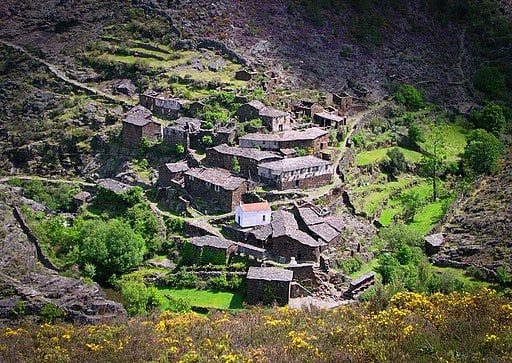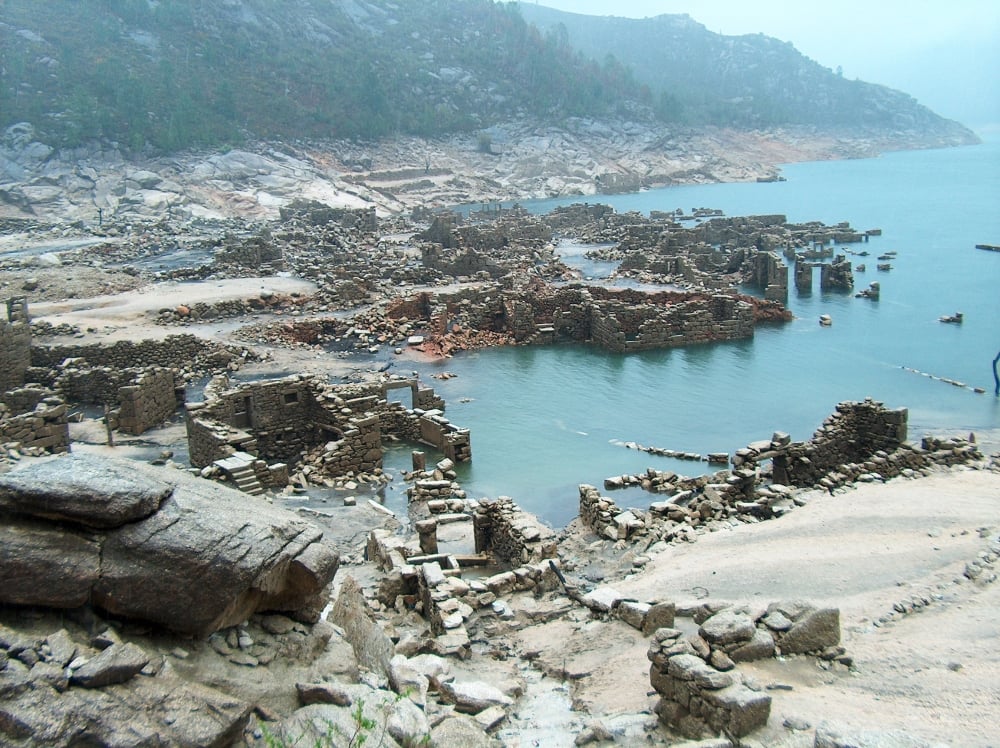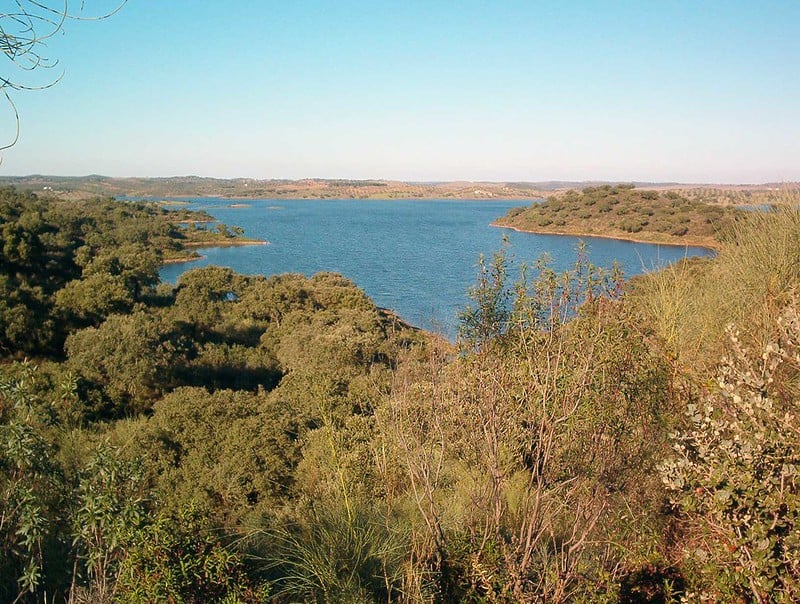In Portugal, there are villages that time has abandoned, lost in the mountains or buried by the waters, which today survive only in the memory of those who knew them. They are places that speak of the past, of hard work, the inevitable exodus, and the weight of history.
The Weight of Abandonment
Portugal is a country shaped by centuries of emigration, by the departure of sons and daughters in search of new opportunities. Once full of life, many of these villages have felt their inhabitants slip through their fingers over the decades. In the valleys and mountains, the land became too ungrateful, life too hard. And so, little by little, silence set in. Villages like Drave, in the depths of the Serra da Freita, or Vilarinho das Furnas, now submerged by the waters of a dam, are just two examples of places that have lost so much – that have disappeared.
Drave – The Village with No Way Back
The village of Drave, also called the “Magic Village,” is a unique example. Nestled in a steep valley, between crystal-clear streams and rugged mountains, Drave was home to just a few families for centuries. With no access road, the village had always depended on the resilience of its inhabitants. Today, the village is deserted, but it continues to attract those looking for a vestige of a different, simpler life that has faded with modernity.
The stone walls, built with the calloused hands of generations, still stand, but the echo of voices has disappeared. In Drave, the feeling of isolation is almost palpable. It is as if time itself had given up passing through. The sound of water flowing through the natural streams is the only music that fills the silence that has remained.

Vilarinho das Furnas – The Submerged Oblivion
Vilarinho das Furnas, a village that was once home to more than 300 inhabitants, is now a submerged ghost town. Located in Gerês, this village was sacrificed in the 1970s for the construction of a dam. The waters swallowed up everything: the houses, the streets, the church. But in years of drought, when the water level drops, the skeletons of its structures emerge, revealing the traces of an old life, a life interrupted.
What was once a bustling village, where cattle were herded and crops were harvested with sweat and effort, is now a distorted reflection in the still waters. The foundations of the houses stand like ghosts, a reminder of how modernity can erase centuries of history with one gesture.

Aldeia de Anta – The Fight against being Forgotten
In Trás-os-Montes, the village of Anta is facing oblivion with stubborn resistance. Although many of its inhabitants have left, there are those who refuse to leave their place. With only a few souls left to keep the fire burning, Anta is a symbol of the fight against total abandonment. The houses, made of sturdy stone and slate roofs, still stand firm, but the loneliness weighs heavy on the days and nights.
Every lost village tells a story of departure, but in Anta, abandonment is fought by those who decided to stay, against all odds. The village seems suspended in time, a window onto a Portugal that once was, where traditions resist, even if the echo of the future insists on calling them away.
Aldeia da Luz -The Village That Was Erased
In the Alentejo, next to the great lake of Alqueva, is the new Aldeia da Luz, but the old one, which carried centuries of history, was submerged by the waters, just like Vilarinho das Furnas. This village disappeared in the 2000s when the Alqueva dam created the largest artificial lake in Europe. What had once been a small Alentejo community, where people lived around the land and cattle breeding, was forced to abandon its roots.
The move was difficult. Although the inhabitants have been relocated to a new, modern, and carefully planned village, nothing can replace the place where generations were born and died. The old Aldeia da Luz is now underwater, but, like Vilarinho, it remains alive in the memories of those who lived there. The cemetery has been moved, the stones of some of the buildings have been reused, but the identity of that village has remained trapped at the bottom of the lake.

Over and Out
Portugal’s lost villages are living testimonies of a country shaped by emigration, the harshness of rural life, and the inexorable passage of time. Each stone, each dirt track tells a story of departure, loss, and resistance. These forgotten, submerged, or abandoned places are reminders that time, no matter how hard it tries, cannot completely erase what once existed. They are memories in ruins, ghosts of a past that, despite everything, continue to speak to us, if we are willing to listen.

